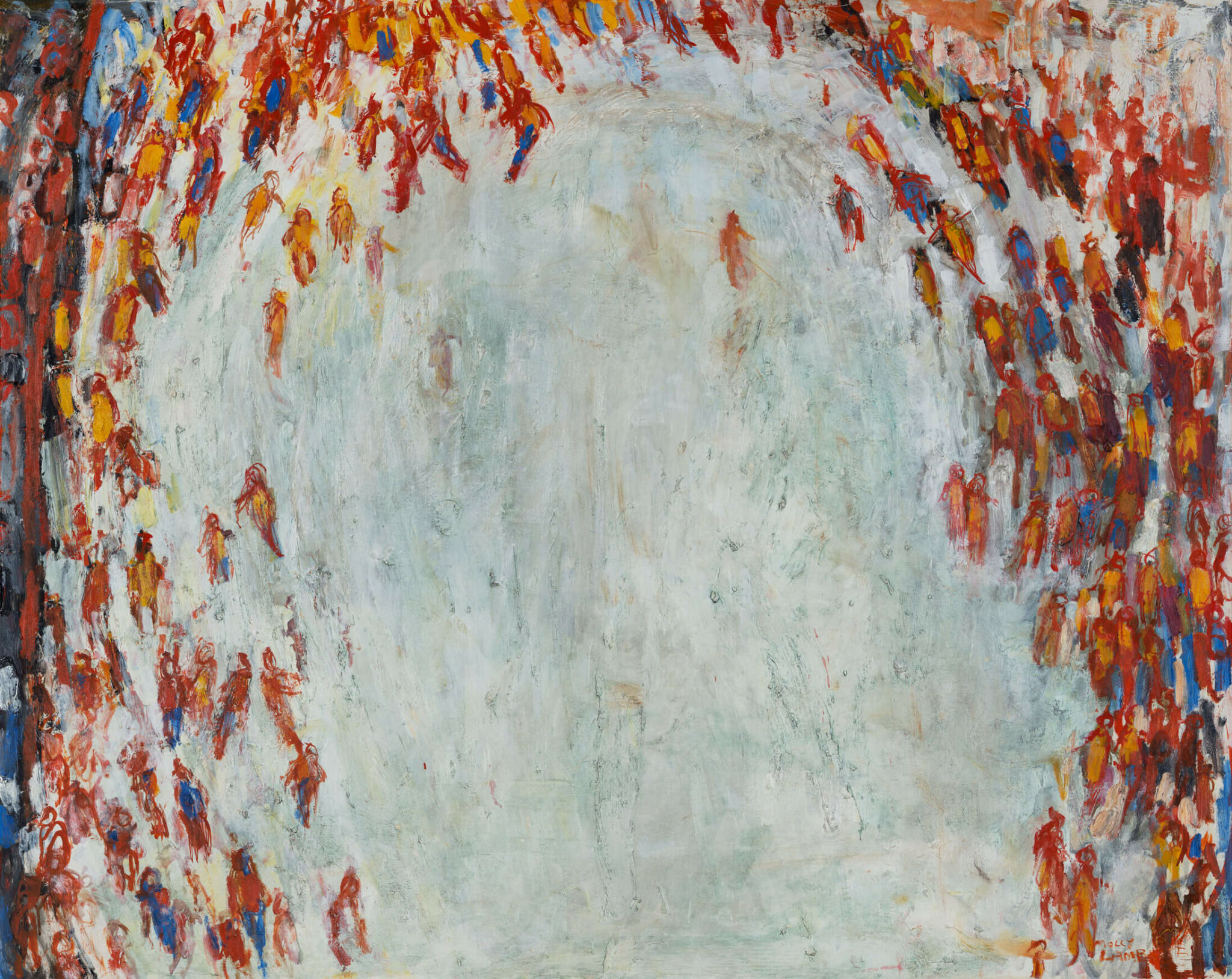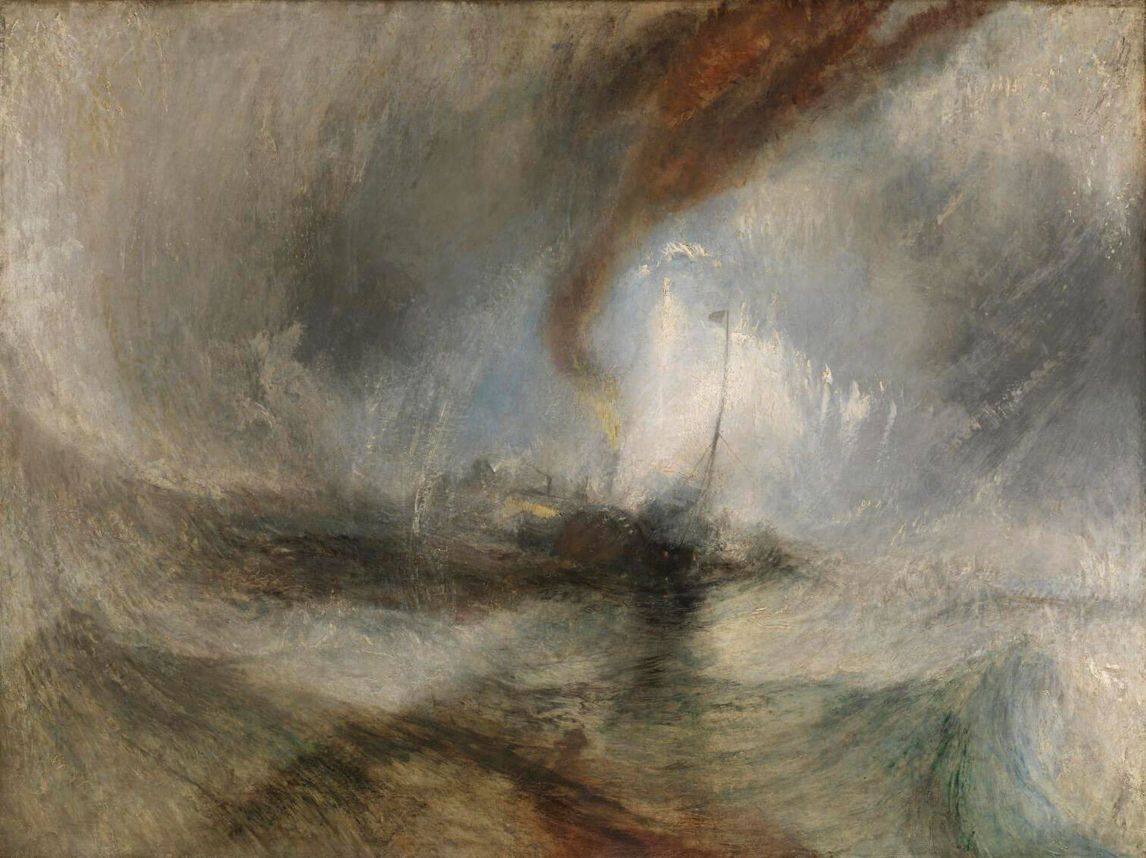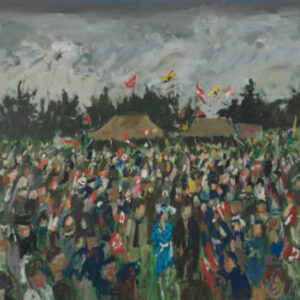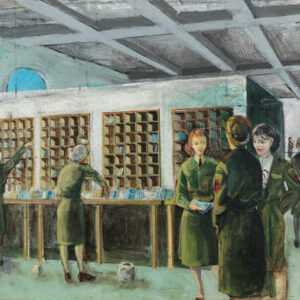Rink Theme—Skaters 1969

Molly Lamb Bobak, Rink Theme—Skaters, 1969
Oil on Masonite, 151.5 x 121 cm
Canada Council Art Bank, Ottawa
Molly Lamb Bobak obviously enjoyed experimenting in her crowd scenes with a variety of techniques and formal elements to achieve different effects—with perspective, structure, and space. In Rink Theme—Skaters, she adopts an unusual bird’s-eye perspective and pushes the figures to the edge of the composition, leaving a large area of negative space in the middle. She paints the image without any horizon line, thereby encouraging viewers to follow the blur of skaters circling the rink. Though the painting veers toward abstraction, its main focus is on movement and positioning the figures in space.

In her paintings of skaters from the late 1960s, Lamb Bobak drew inspiration from the American abstract-expressionist painter Sam Francis (1923–1994). One series of drawings and paintings, based on her observations at hockey games in Fredericton, places the audience on the sidelines, with one or two skaters occupying the central white space of the rink. Curator Ian Lumsden compared this suite, with its “swirling vortex of activity,” to J.M.W. Turner’s (1775–1851) Snow Storm—Steam-Boat Off a Harbour’s Mouth, 1842—a painting where the subject becomes movement itself.
As a “passionate spectator,” Lamb Bobak always found meaning and beauty in the everyday world around her. She created many compositions of skaters—a quintessentially Canadian theme—in a variety of media, but she never descended into kitsch. She compared her treatment of crowd scenes to her paintings of flowers. The watercolours Little Poppies, 1971, and Anemones, 1975, for example, also play with negative space to help achieve their vitality. Lamb Bobak attributed this aspect of her work to the influence of Eastern art, citing (without any identification) a composition that featured two small persimmons at the bottom of the picture plane amid an otherwise empty space.
In a comparable work, the lithograph The School Yard, 1962, Lamb Bobak achieves a sense of movement amid the mass of children by different means. She populates the entire picture plane with childish figures rendered in black, though in the foreground and the middle ground the children, accompanied by a few adults, are grouped into clusters, with small areas of negative space separating them. The group in the background appears to be denser, defined by a near lack of negative space. Through this technique, Lamb Bobak develops a sense of perspective in the composition.

 About the Author
About the Author
 More Online Art Books
More Online Art Books
 Acknowledgements
Acknowledgements